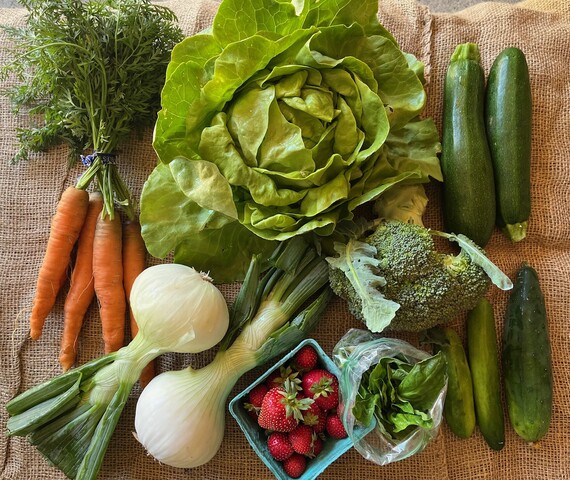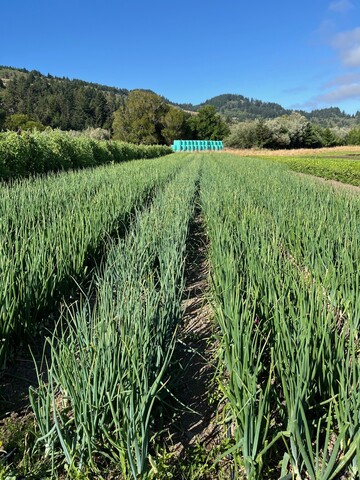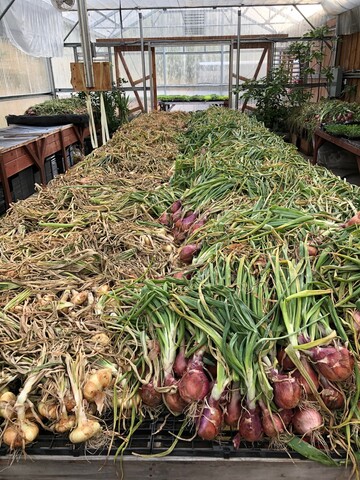In your CSA share this week:
- Bunch Carrots, hooray!
- Walla Walla Sweet Onions
- Strawberries
- Broccoli
- Basil
- Cucumbers
- Zucchini
- Head Lettuce
Wa-wa-wee-wa, Walla Wallas!
The arrival of the Walla Walla Sweets is a true marker of July at Valley Flora. We grow seven or eight onion varieties on the farm, but there's a certain place in my heart reserved for this special open-pollinated variety. They're easy-eating: juicy, mild, sweet, versatile (check out this long list of Walla Walla-centric recipes from the Walla Walla Sweet Growers Association). But they're also fleeting compared to most of our other varieties, which store well into winter. This is a truly seasonal onion, only available from us from now until September (Walla Wallas have a higher water content than other onions, making them less suitable for long-term storage). We start them from seed, along with all of our other varieties, in early February. They spend over 10 weeks in seedling trays in the greenhouse, slowly girthing up as we nurse them through the cold, dark days of late winter and early spring. By the end of April, weather permitting, we transplant all our onions, shallots and leeks into the field (close to 23,000 bareroot seedlings that get hand-planted over the course of a few days) and then tend them for another three months until first harvest. There's a lot of hand weeding that goes into organic onion production, since they're slow growing and don't form a competitive canopy to shade out weeds. The hope is that all that TLC will add up to an abundance of onions that will see us through the rest of the season and into next spring, starting with the Walla Wallas.
I'm happy to report that this year's onion crop has been coming along spectacularly, healthy and vigorous. We always start harvesting our Walla Wallas fresh from the field while they still have green tops (those tops can be eaten like green onions if you so chose). As the onions finish maturing in the field, the tops start to dry down and flop over, at which point we pull the remainder of the crop and "cure" it in our greenhouse for 10 days. Once the tops are fully dry, we trim the roots and tops and put them in our dry storage room, which extends our Walla Walla season into September. By then we will have also harvested our yellow and red storage onions, cipollinis, and shallots and will be using every spare minute to get them cured, cleaned and stashed in climate-controlled dry storage.
We've still got a few weeks to go until the big storage onion harvest is upon us, which makes cherry-picking big, fat, fresh Walla Wallas from the field evermore enjoyable right now. I hope you feel the same way about eating them :). Buen provecho!



